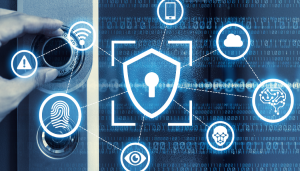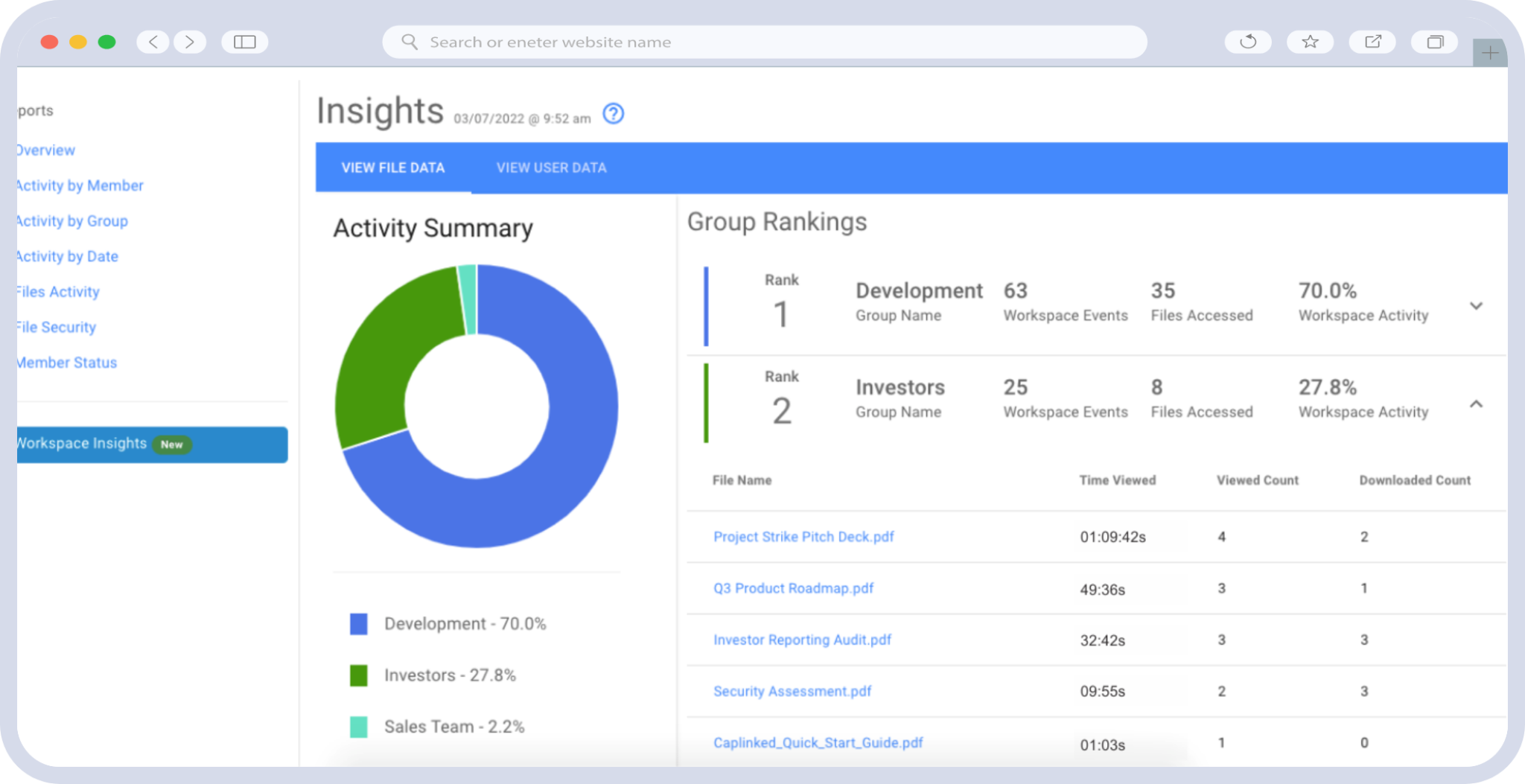NIS2 is not a gentle refresh of Europe’s cybersecurity rules: it expands scope, gives regulators sharper tools, and raises the ceiling on fines. The law is now national law across the EU through Member State transpositions of Directive (EU) 2022/2555, with supervisors empowered to conduct inspections, require corrective measures, and sanction management for persistent failures. Penalties scale with size: essential entities face administrative fines up to 10 million euro or 2 percent of global annual turnover, whichever is higher, as set out in Articles 34–36.
For diligence, that shift matters. Reviewers will no longer accept policy slides in place of working controls. They will look for evidence that maps to what NIS2 actually requires: risk management, incident reporting, supply-chain oversight, and governance.
This is where the virtual data room moves from storage to proof, especially when it can show activity history through an audit trail, apply fine-grained permissions, and watermarking via document management with tracking.
Table of Contents
ToggleWho Counts as an “Essential Entity” and Why That Matters
NIS2 divides covered organizations into essential and important entities. Essential status applies to sectors in Annex I: energy, transport, banking, financial market infrastructure, health, drinking water, wastewater, digital infrastructure, public administration, and space. Size and criticality tests determine who lands in scope, with group structures and cross-border operations considered under the same directive framework in Articles 2–4 and Annex I.
Why it matters in diligence: essential entities face stricter supervision and higher fines. Their evidence needs to be crisper: named accountable roles, control testing that actually happened, and contracts that satisfy supply-chain requirements. Keeping those artifacts in a room that proves provenance and access patterns reduces friction for both internal audit and external reviewers, which is exactly what document management with tracking is designed to do.
The New Evidence Model: What Regulators and Buyers Expect to See
NIS2 turns “show me” into the default. Strong programs do three simple things inside the room:
- Map each requirement to a control and an artifact: a risk statement, the control description, and a verifier such as a log extract, change record, or test report aligned to Article 21 risk management measures.
- Keep provenance obvious: versioned policies, permission changes, and file-access trails that export cleanly for counsel and the board using an activity tracker feature from your VDR.
- Contain leakage: watermark external viewers and keep sensitive exports revocable with FileProtect.
When every claim sits beside its proof, diligence stops being a scavenger hunt and becomes a confirmation exercise.
Incident Reporting Pack: 24-hour Early Warning and 72-hour Notification
NIS2 standardizes timelines: essential and important entities must send an early-warning within 24 hours for significant incidents, a formal notification within 72 hours, and a final report within one month, as laid out in Article 23. A strong data-room section makes those expectations easy to verify.
What Belongs in the Incident Folder
Keep an incident taxonomy tied to materiality thresholds and escalation paths that reflect Article 23 criteria. Add timestamped decision logs from the last rehearsal so reviewers can see who made the call, when the clock started, and how notifications were prepared. Store regulator templates and contact points, plus evidence of post-incident analysis and lessons learned.
How to Show the Program Actually Works
Post one or two redacted exemplars: a drill package with the timeline, the notification draft, and the executive approval trail. Make provenance part of the proof: show who accessed the playbook and when. For anything sensitive, require revoke-after-download through FileProtect and apply viewer-level watermarking.
Where This Connects to the Rest of NIS2
Your incident evidence should align with risk management in Article 21 and with supply-chain duties in Article 21(2)(d) and Article 28, since many significant events start with a third-party weakness. Cross-link those controls inside the room so reviewers can follow the thread without leaving the workspace.
Third-party and Supply-chain Oversight: Contracts, Registers, and Monitoring
NIS2 expects essential entities to manage supplier risk with the same seriousness as in-house controls. The directive makes it explicit: risk from ICT service providers must be addressed through governance, technical measures, and contracts, as set out in Article 21(2)(d) and the supply-chain provisions in Article 28 of Directive (EU) 2022/2555.
Build a tight package in the room:
- A live ICT and SaaS register with criticality tags, data classes, and concentration notes
- Contract extracts that show the required clauses: audit and access rights, sub-outsourcing approvals, data location and portability, incident cooperation, termination and exit support as required by Article 28 in Directive (EU) 2022/2555
- Evidence of ongoing assurance: penetration summaries, third-party attestations, remediation SLAs, and closure rates
Keep supplier files where provenance is obvious. For sensitive vendor reports, require revoke-after-download and log reviewer access.
Security Measures and Testing Library: From Baseline to Exercises
Regulators will test whether your “baseline measures” exist in practice. NIS2 outlines a concrete set: risk analysis and policies; incident handling; business continuity with backup and recovery; supply-chain security; security in network and information systems; access control and asset management; encryption; and vulnerability handling under Article 21 of Directive (EU) 2022/2555.
Show it clearly:
- A control matrix mapped to Article 21 requirements with owners and evidence pointers
- An annual test calendar; results and closure records for the last three cycles
- Tabletop exercises that include decision logs and timestamps
- Service restoration drills with RTO and RPO targets plus proof they were met
Post the matrix as a living spreadsheet and link each control to its artifact. Keep clarifying questions attached to the evidence folder, not buried in email.
Governance and Accountability: Management Duties and Proof of Oversight
NIS2 raises the bar for leadership. Management bodies must approve cybersecurity risk-management measures, oversee implementation, and receive regular training; repeated neglect can trigger sanctions for individuals, as described in Article 20 of Directive (EU) 2022/2555.
Give reviewers a clean oversight picture:
- Board-approved policies with dated approvals and version history
- Named accountable owners and delegated authorities for each NIS2 domain
- Training records for executives and operators with annual refresh cadence
- Decision logs for risk acceptance, exception handling, and investment priorities
These items benefit from transparent provenance: track opens, edits, and exports and watermark board materials.
Build a NIS2-ready Data Room: Structure, Controls, and Reviewer Workflow
A well-built room makes verification fast and repeatable. Mirror the regulation in your folder design: Governance, Risk & Controls; Incident Program; Testing; Third-Party; Business Continuity; Evidence Exports.
Then wire in three mechanics that matter:
- Proof of activity: exportable trails for who saw what and when via Activity Tracker / Audit Trail
- Leak containment: viewer-level watermarking and revoke-after-download using document management with tracking and FileProtect DRM
- Context that sticks: structured threads beside the artifact with EZ Q&A so every claim sits next to its evidence and explanation
Keep it simple: a short “start here” note that links the reviewer to NIS2 articles in Directive (EU) 2022/2555, the control matrix, and the most recent evidence exports. With that structure in place, diligence shifts from persuasion to confirmation.
Turn NIS2 Scrutiny Into a Strength
NIS2 is enforceable law: regulators and buyers expect evidence, not posture, as set out in Directive (EU) 2022/2555.
A data room should prove timing, control, and containment: exportable trails, viewer-level watermarking, tight permissions, and revoke-after-download for ultimate safety.
When every claim sits beside its artifact, NIS2 diligence becomes confirmation: not negotiation.




